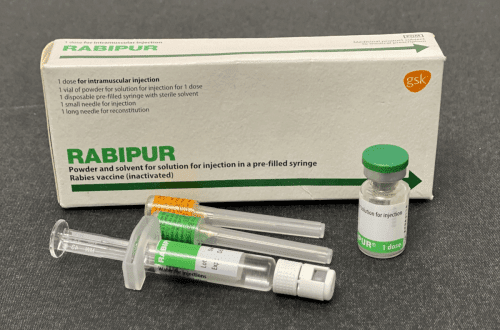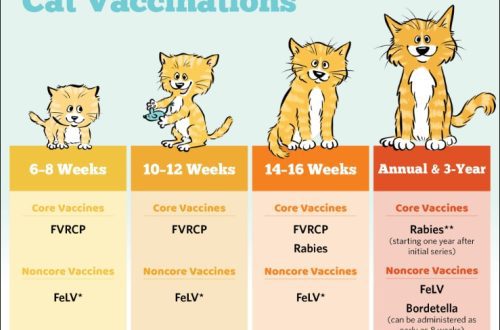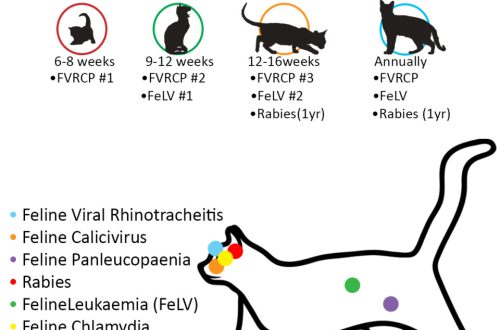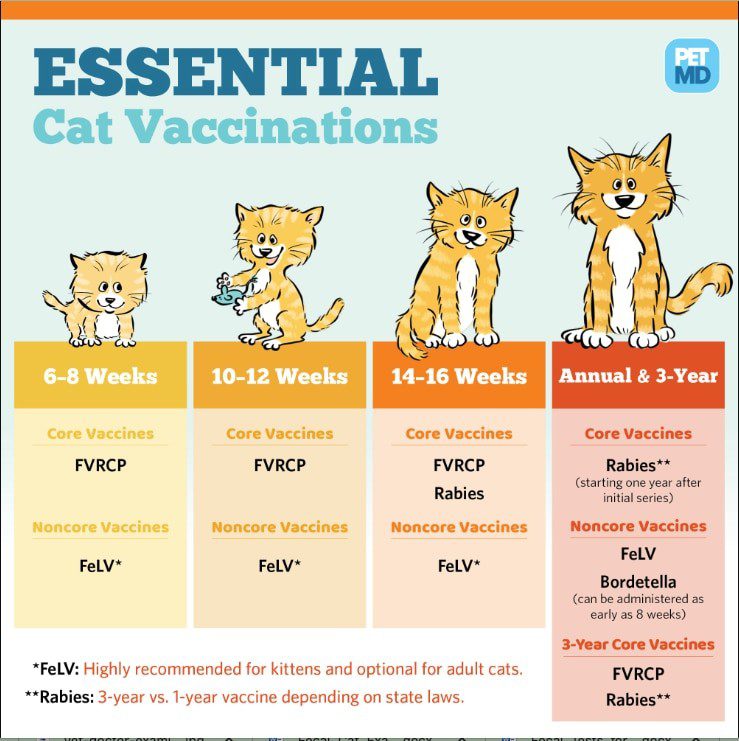
Cat vaccination schedule
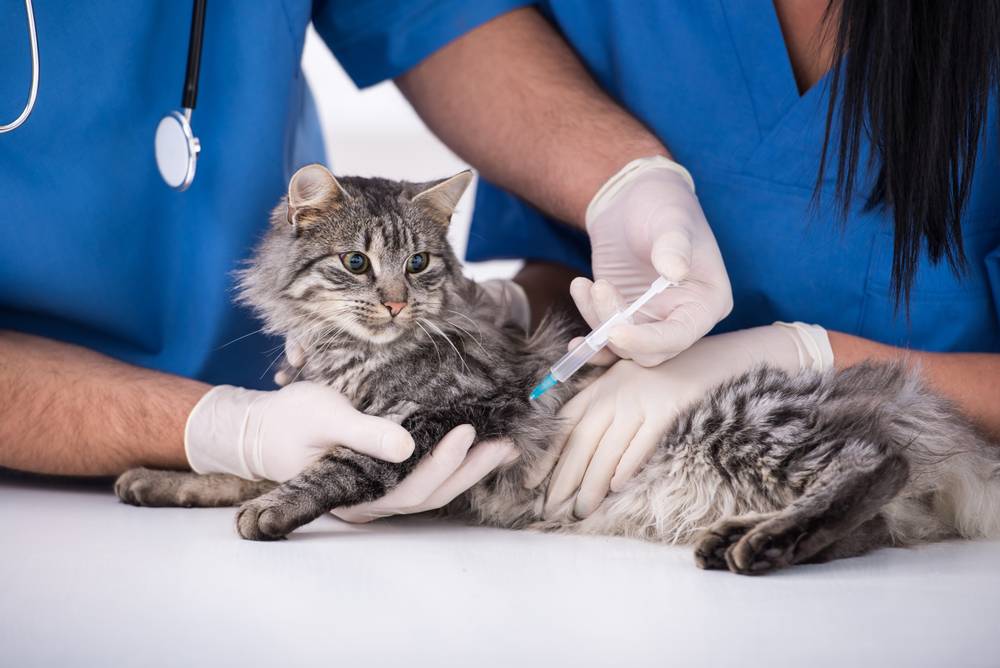
Types of vaccines
Distinguish initial vaccination for kittens – a series of vaccinations in the first year of life, initial vaccination of adult cats – in cases where the cat is already an adult, but nothing is known about previous vaccinations or they were not carried out at all, and revaccination – repeated annual or every three years the introduction of vaccines to maintain the already created immunity.
There are core (recommended) vaccines for major diseases and supplementary (optional or necessary) vaccines. The basic vaccination for all cats is considered to be vaccination against panleukopenia, herpesvirus (viral rhinotracheitis), calicivirus and rabies (rabies vaccination is basic for the Russian Federation). Additional vaccinations include feline leukemia virus, feline immunodeficiency virus, feline bordetellosis, and feline chlamydia.
The choice of the type of vaccine for basic vaccinations, as well as the choice of additional vaccinations, is made by a veterinarian after examining the cat and talking with the owner about the pet’s lifestyle and possible risks of infectious diseases. So, for example, for the only cat in the house, which the owners do not plan to exhibit or use for breeding, a basic vaccination will be sufficient; for show animals, additional vaccinations against viral leukemia and chlamydia will be needed, which is also necessary for cats that have the opportunity to walk outside or are kept in groups. The choice of which diseases a cat will be vaccinated against is also influenced by the number of cats in the house, visits to pet hotels during the owners’ vacation, reproductive status, trips to the country or traveling with the owners.
Vaccination schedule
During the initial vaccination of kittens, core vaccines against panleukopenia, herpesvirus and calicivirus are administered several times with an interval of 2-4 weeks. As a rule, 4-5 vaccinations are recommended in the first year of a kitten’s life – this is due to the fact that kittens have maternal antibodies in their blood, transmitted with colostrum, which can interfere with the formation of immunity in response to the vaccine. Some kittens have a low level of antibodies, others have a high level, antibodies are present in the blood on average until 8-9 weeks of age, but in some kittens they may disappear earlier or last longer, up to 14-16 weeks. In this case, vaccination against the rabies virus is carried out once with revaccination one year after the first injection, and the first rabies vaccine can be administered from the age of 12 weeks.
During the initial vaccination of adult cats, the core vaccines are administered twice with an interval of 2-4 weeks, the rabies vaccination is carried out once with a booster one year later.
Revaccination is done to maintain active protection (immunity) throughout the life of the cat, depending on the type of vaccine, local regulations and risk of infection. Thus, immunity in response to the introduction of a vaccine against viral respiratory infections (rhinotracheitis and calicivirus) is shorter than with the introduction of a panleukopenia vaccine, and therefore, for cats with a high risk of infection (exhibitions, zoo hotels), annual revaccination against these diseases may be required, in while one revaccination every three years will be enough to protect against panleukopenia. Revaccination against rabies, according to the legislation of the Russian Federation, should be carried out annually.
The choice of the schedule of vaccination and the necessary types of vaccines is carried out only by a veterinarian.
The article is not a call to action!
For a more detailed study of the problem, we recommend contacting a specialist.
Ask the vet
22 2017 June
Updated: 21 May 2022



